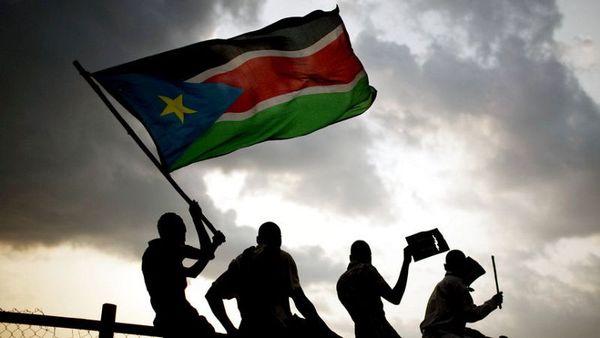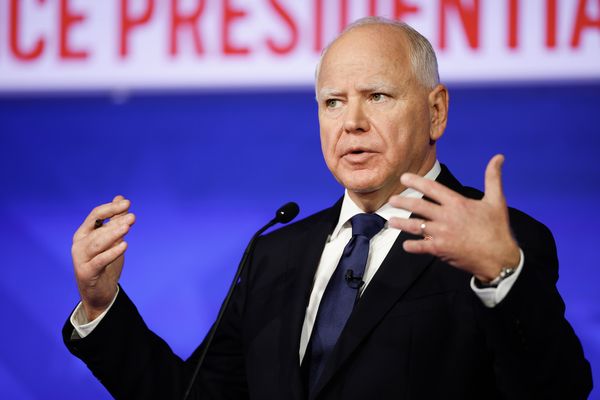
On 15 September 2008 Lehman Brothers, the giant US investment bank, went bust.
This was the moment when global financial stress turned into a full-blown international emergency.
But what exactly happened on the day a decade ago? Why did it happen? What were the consequences? And could something similar happen again?
What happened?
The US government refused to bail out Lehman Brothers, which was finding it impossible to roll over its borrowings in the markets.
The Wall Street bank was, instead, allowed to go bust.
That failure of a systemically-important financial institution with some $700bn (£538bn) of liabilities created a seismic shock to the entire global financial system. The global money markets froze, and banks and insurance companies in most of the developed world also suddenly found they could not borrow either.
The chair of the Federal Reserve (the US’ central bank), Ben Bernanke, subsequently called it “the worst financial crisis in global history”.
Central banks were forced to lend to banks on a colossal scale in order to prevent a cascade of financial sector bankruptcies of institutions even bigger than Lehman. Such a general collapse would have meant, all around the world, wages not being paid, cash machines not operating and, in all likelihood, total panic.
“If you can’t buy food or petrol, or medicine for your kids, people will just start breaking the windows and helping themselves … it’ll be anarchy,” fretted Gordon Brown privately at the time.
Speaking about the tumult in the global financial system as Congress hesitated on approving a system-wide bailout, George W Bush put it very simply: “This sucker could go down.”
Those banks, ultimately, were bailed out with unprecedented volumes of taxpayers’ money in order to restore some semblance of normality to financial markets.
Why did it happen?
The financial crisis did not begin with Lehman Brothers going bust. This was not some random shock which upset a well-functioning system.
The financial system had been under severe stress for more than a year previously. Another large US investment bank, Bear Stearns, had been rescued in March. And a UK mortgage lender, Northern Rock, had experienced a run as early as the autumn of 2007.
The proximate cause of this stress was a systematic loss of trust amongst financiers in the solvency of each other’s institutions.
Bankers in the US had developed a lucrative business of buying up the US mortgages of poor Americans (known as “subprime”), packaging them together with better quality mortgages and selling them on as essentially risk-free assets known as mortgage-backed securities.
When the US central bank raised interest rates in 2006 many American homeowners started to default, house prices fell and these securities were revealed to be, in fact, very risky indeed and it was clear that there were considerable losses in the system.
But it was unclear where all these toxic securities were and whose balance sheets had been blown apart by the bad debts. Banks started charging high rates of interest to lend to other banks and institutions who, they suspected, might be sitting on massive unrecognised losses. This was the “credit crunch” phase.
What happened when Lehman went under was that the crunch morphed into an out-and-out panic where everyone more or less stopped lending entirely.
So it was all about dodgy American mortgages?
No. Subprime itself was not the root cause of the crisis. At its peak in 2007 the size of the market was around $1.3 trillion. That’s in the context of total assets at that time of around $242 trillion. The subprime farrago merely revealed the underlying fragility of the system.
Bank executives had been juicing their profits (and personal bonuses) by running down their protective capital cushions to thin slithers – funding their fast-expanding balance sheets with huge amounts of debt rather than shareholders’ funds. Their reserves of readily-sellable assets were also dangerously low.
The entire Western banking system was catastrophically undercapitalised and illiquid. And this was true not just in the US and the UK but across Europe too. If they had had more robust balance sheets there would still have been a crisis as the bad lending bubble burst, but it would not have become the near total meltdown we saw in September 2008.
According to the International Monetary Fund there had been more than 120 banking crises, involving bad lending, between 1970 and 2007. This was an order of magnitude worse than any of those. The reason was not the scale of the bad lending, but the staggering vulnerability of the global system.
Why was the system so weak?
The independent Financial Crisis Inquiry Commission, established by Congress, blamed a combination of historic deregulation of finance by politicians and reckless behaviour by greedy and incompetent bank executives.
Some have identified corruption as the root cause of the deregulation, with colossal donations from the US financial services sector flowing to politicians in the decades leading up to the crisis.
But ideological capture was perhaps more important.
Politicians and regulators had an ideological aversion to regulation. The view was that, even if there was an upset, the system would ultimately right itself, perhaps with the help of some central bank interest rate cuts.
There was an ingrained belief in the virtues of light-touch, almost non-existent, regulation. The former Federal Reserve president, Alan Greenspan, deliberately didn’t regulate. The Bank of England downgraded the importance of analysing financial stability after operational independence in 1997. And the old Financial Services Authority – the primary regulator of institutions – was simply incompetent. The mainland Europeans and the Japanese were no better at regulating their own megabanks, despite frequent denunciations of reckless “Anglo-Saxon” finance.
What was the fallout?
The economic consequences were profound.
International trade slipped off a cliff, falling at a faster rate than it did during the 1930s. The same was true of industrial production. Business and household confidence collapsed. The global economy went into recession. Unemployment soared around the world.
Only trillions of dollars of taxpayer funding and guarantees prevented the entire global financial system imploding in a manner that would have been even more socially destructive than the Great Depression.
And the scars have been immense. The global economic recovery in many Western countries over the following decade has been extremely weak by historic standards, in part due to the fact that cause of the recession was a financial bust.
In 2010 Andy Haldane, the chief economist of the Bank of England, estimated that the total cost of the crash in foregone economic growth was between $60 trillion and $200 trillion, or between one and five times the planet’s GDP.
“To call these numbers ‘astronomical’ would be to do astronomy a disservice,” he said.
Living standards in many countries have taken a huge hit. And governments have added to this pain as they have imposed severe public sector austerity in response to soaring state borrowing which was needed to stop demand falling even further during the slump.
Many attribute the populist surge in many countries – from the election of Donald Trump, to the Brexit vote, to the populist earthquake in Italy – partly to the economic disaffection and catastrophic draining of confidence in political elites created by the financial crisis a decade ago.
Could it happen again?
Regulators insist that the safety of the global finance system has been considerably enhanced, arguing and they have imposed higher liquidity requirements on banks, forced them to considerably increase their capital buffers and that they generally monitor the system much more closely.
Yet, thanks to mergers in the crisis, banks are even bigger today than they were a decade ago. And many experts still believe giant systemically-important banks remain dangerously overleveraged, funding themselves with too much debt, making them vulnerable to even a relatively small fall in the value of their assets.
“In the run up to the meltdown leverage was excessive and behaviour was egregious. Ten years on, leverage remains excessive and egregious behaviour has gone largely unpunished,” says the former UK regulator Bob Jenkins.
And Donald Trump, guided by his Wall Street advisors, is de-regulating high finance in the US, planning to undermine the post-crisis “Volcker Rule”, which prevents large systemically-important banks, like Lehman was, from making bets with their own money, rather than merely transacting on behalf of customers.
“It is inevitable that weakening the Volcker Rule will result in banks again pushing the envelope, gaming the system and ramping up their dangerous trading,” says Dennis Kelleher of the US think tank Better Markets.
Historically, financial crises have tended to come in unexpected forms. If one knew where, when or how they would happen one could take early preventive action.
The best, perhaps the only real, insurance against the kind of catastrophic system-wide collapse in trust that materialised in September 2008 is a very well capitalised global banking system.
A decade on, this is something that we still, alas, lack.







